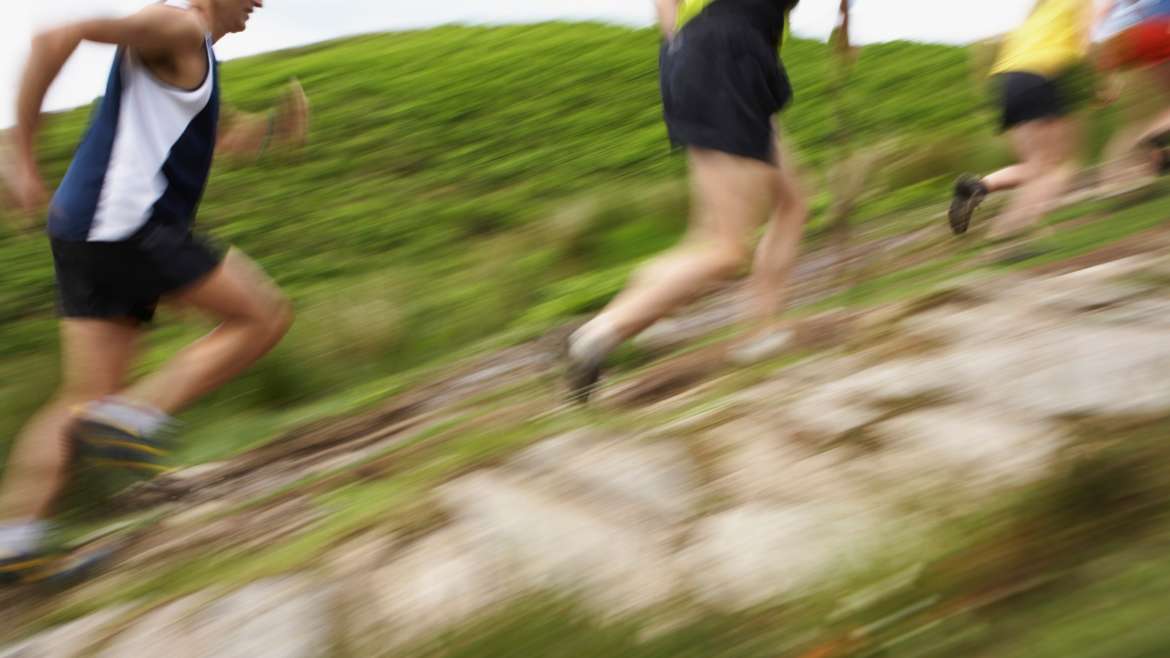If you’re training for a marathon or an event how do you imagine you’ll be when you can see the finish line? Staggering towards it and collapsing in exhaustion at the end? Or using every last ounce of energy you have to sprint towards it and get the best time you can?
If it’s the latter then we can help! (You’re on your own with the first option!)
The majority of marathon training plans focus on getting the miles in the legs and building up long runs. Whilst this is necessary, adding sprints and hill runs will help your body to process oxygen more effectively. This means on the race day it takes you longer to run out of fuel.
So if you want to add some speed, how could you do it?
Head for the hills!
Yes, that’s right. Add some hill running to your schedule. Before you groan, or click to read something else, just look at how it will benefit you!
If you’re a regular runner you’re building three types of fitness:
1) Aerobic fitness
2) Neuromuscular fitness
3) Endurance
Hill training will increase your neuromuscular fitness as it improves the communication between your brain and your muscles, which affects your stride length, stride frequency and how you fight fatigue.

Builds strength and speed
Working on your strength in the gym is great, but it’s in isolation from the rest of your body. Using hill training means you’re using your whole body. Your hips, legs, ankles and feet all move in coordination, whilst supporting your body weight. This means that you’re increasing the amount of power you have which gives you longer, faster running strides. Plus it helps build muscle in your glutes, hamstrings, quads and calves.
You also lift your leg higher, which will later translate to a higher knee raise on the flat ground.
Prevents injury
Adding sprints to your training can often cause injury if you go too hard, too fast, and injury when training for an event can make the difference between reaching the start line and watching it from the sidelines.
You’re also forced, by gravity, to use your legs more and take more strides, meaning your leg turnover rate is higher than on flat ground, but without running very fast. This means you’re getting the benefit of sprints, but with a much lower risk of injury.
Improves your PB
Research at the Karolinska Institute in Sweden discovered that after marathon trainers added twice weekly hill sprints to their training, their running economy had improved by 3%. This might not sound like much, but it can reduce a marathon time by six minutes!
There is also a school of thought that hill running improves the elasticity of ligaments, tendons and muscles, meaning those tissues can work more effectively with less effort.
How to do hill runs
Before you head for Greenwich Park and start racing to the top, you should introduce hill training gently.
If you’re new to running, your first session with hill sprints should be two 8 second sprints on a fairly low gradient. This doesn’t look like much, but it will allow your body to adapt safely to the change in terrain. Adding too much of a hill too fast can increase your risk of injury.
Recovery time will vary to each individual but take what you need to get back to a point where you can do another hill sprint. Cool down at a good pace too by jogging back home. Don’t make the hill sprints the last thing you do.
When running uphill try and maintain an even pace and stride – even if your stride shortens considerably, which it may well do. Keep your posture upright and keep your breathing even. If you’re breathing too fast, slow down. You want everything to be as even as possible – your strides, breathing, and pace.



Add Comment